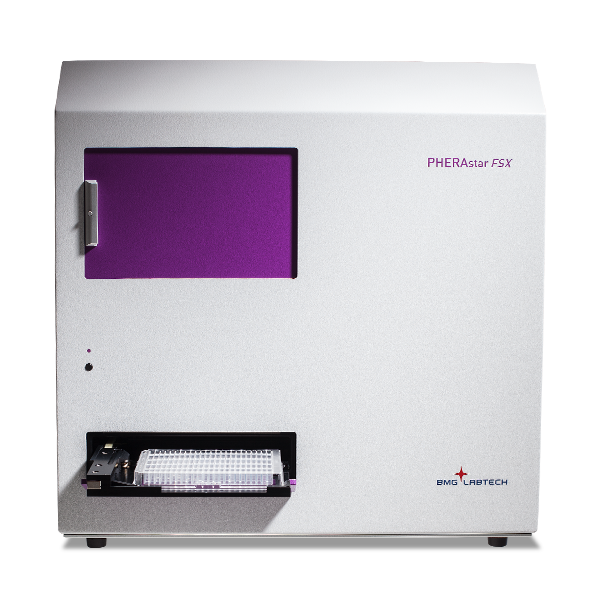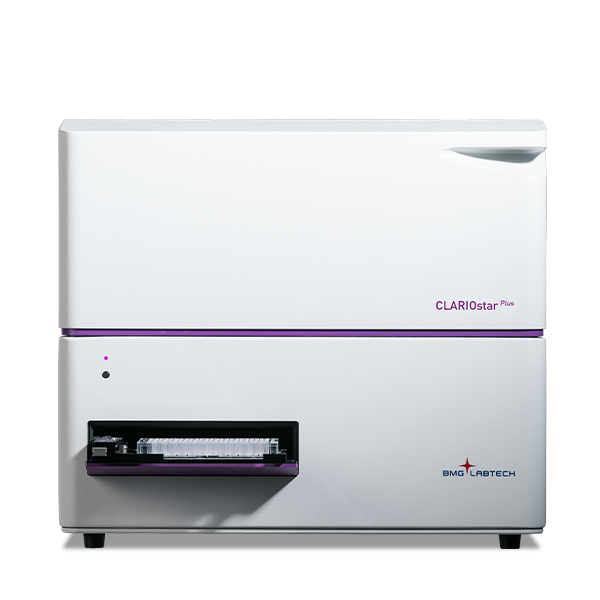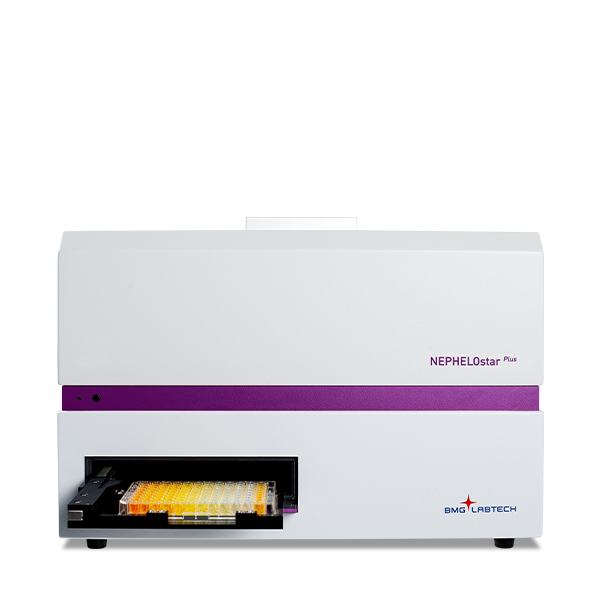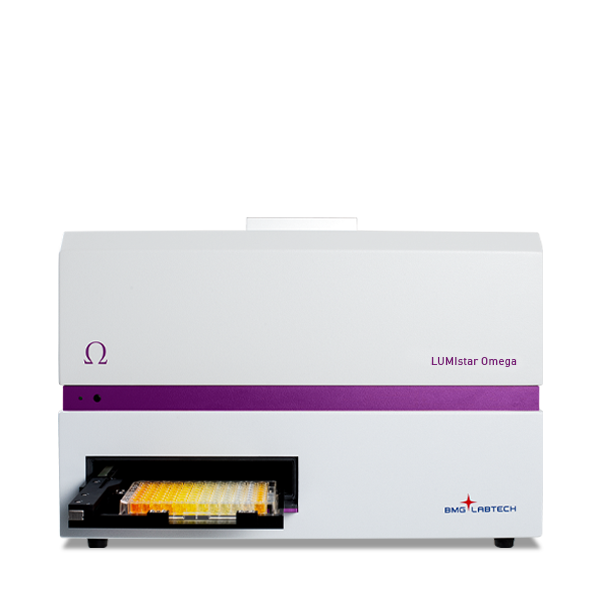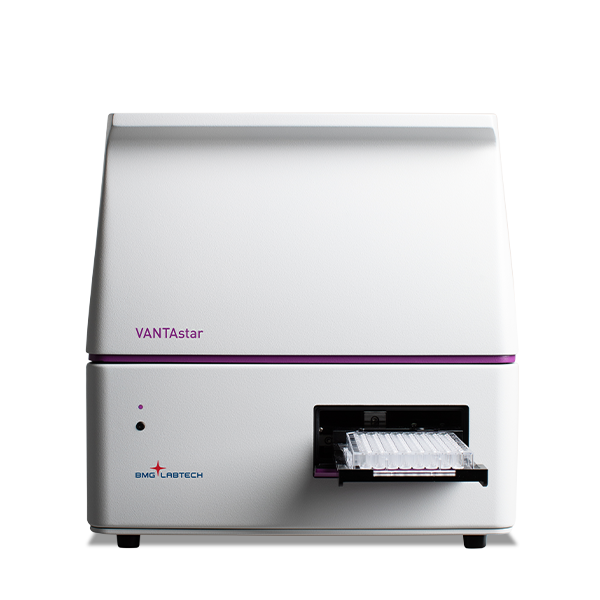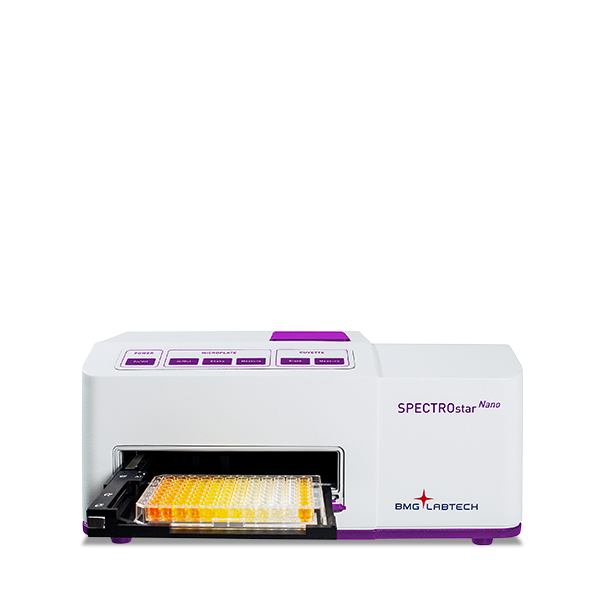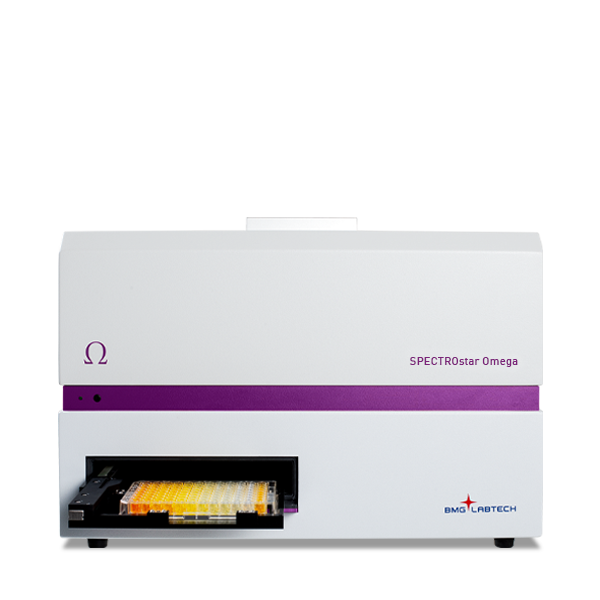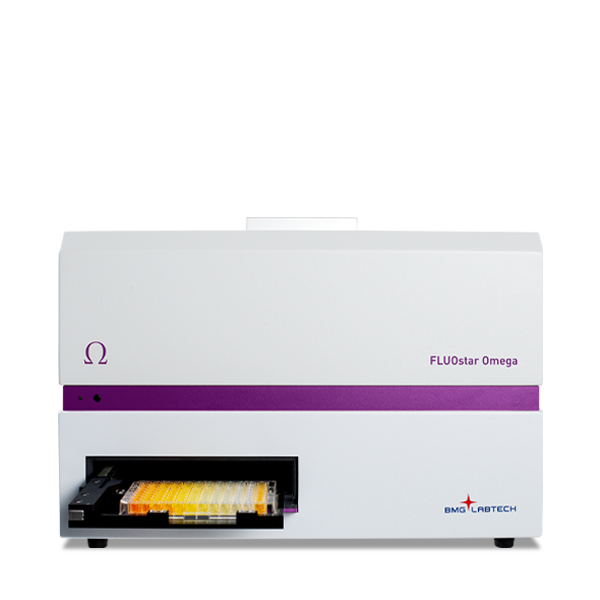
 Basic information about luminescence plate readers
Basic information about luminescence plate readers
A luminescence microplate reader (longform: luminescence microplate reader; shortform: luminescence reader also named luminometer or luciferase plate reader) is a piece of equipment capable of detecting the light photons emitted by chemical, bio-chemical or enzymatic reactions in a microplate and quantify them. Luminescence detection is not an absolute measurement, like absorbance. The intensity of the signal is usually relative to other measurements or to a refence measurement taken by an instrument. Consequently, luminometers quantify the light signal emitted by a sample in Relative Light Units (RLU).
A luminometer able to measure samples present in a microplate is usually referred to as a luminescence microplate reader.
Luminescence plate readers are used for different applications in various fields, such as academic life science research, drug discovery and screening, clinical laboratories, synthetic biology and food or water quality monitoring.
What is a luminescence plate reader?
Luminescence microplate readers are quite simple instruments, optically speaking, when compared to fluorescence plate readers. Because of the nature of the luminescent signal or assay, luminescence microplate readers require neither an excitation light source, nor optics for excitation wavelength selection (as needed for absorbance or fluorescence detection). They just require a reading chamber, an optical system for bringing the light signal from the sample to the detector, a detector (photomultiplier tube, PMT) and possibly an optical system for the selection of luminescent (emission) wavelengths.
- Initial recommendation
- Detailed Recommendation

Get help selecting the right microplate reader
Configure your microplate reader and get an initial recommendation!
Luminescence plate readers are available as stand alone, dedicated readers (luminometers) or as part of multi-mode microplate readers.
Do you want to use a luminescence plate reader in your lab?
Request a quote here or more information here:

If you are on the market for a new luminescence reader, there are a few factors to take into account, as the performance of the instrument can significantly affect the quality of your assay results.
Sensitivity
The luminescent signal is typically generated by a bio-chemical or chemical reaction and does not require excitation light. Consequently, it generally offers a superior sensitivity when compared to absorbance or fluorescence. The unspecific background or noise signal is extremely limited when compared to fluorescence intensity, since there is no excitation process that can trigger light scatter or autofluorescence from both the sample and the microplate.
Nevertheless, a luminescence microplate reader with high sensitivity will deliver assay data with a better statistic, less variability among replicates, and a larger delta (distance) between responding and not-responding samples. In addition, an increased sensitivity will allow you to reduce the amount of reagents and/or samples used to achieve good quality data and consequently reduce costs.
Dynamic range
Luminescent reactions in microplates are usually based on the addition of a substrate to the wells to start an enzymatic reaction. Once the reaction is started and the amount of substrate is metabolised by the enzyme, the reaction is exhausted and cannot be retriggered again, unless new reagents and samples are used in a fresh microplate. Consequently, it is imperative to acquire the signal of all samples that have to be measured at once on the microplate. This avoids the risk of having to repeat the assay and to consume more reagents.
If you have samples spanning over a large range of signal intensities on a single microplate, it may be difficult to acquire them all in one measurement with one setting. Very strong signals may saturate the detector of the microplate reader. Very low signals may be undiscernible from the blanks.
Having a broad dynamic range allows your luminescence microplate reader to acquire highly divergent samples (bright samples and dim samples) in one run on a single microplate, avoiding waste of reagents and time caused by multiple trial-and-error measurements to find the correct dilution-gain-integration time ratio. The Enhanced Dynamic Range feature on the PHERAstar FSX, CLARIOstar Plus and VANTAstar offers the largest possible dynamic range on the market (8 concentration decades), and makes it possible to automatically measure very bright and dim signals in the same microplate with one measurement – easy to use and no adjustment required.
Wavelength selection
This capability (with filters or monochromators) in luminescence readers is not mandatory (as for absorbance or fluorescence detection), especially when detecting a basic assay. However, depending on the application and especially for luminescent assays with multiple signals, the possibility to select the emission from a wavelength range is beneficial. Filters or monochromators can be employed for this purpose. This option is useful when developing new assays or detecting multiple luminescent signals. Moreover, it helps to optimise the assays by reducing background noise.
Filters are usually more sensitive, whereas monochromators offer more flexibility. An exception to this paradigm is the Linear Variable Filter (LVF) MonochromatorTM system available on the CLARIOstar Plus and the VANTAstar. LVF Monochromators have filter-like performance and make the CLARIOstar Plus the most sensitive monochromator based microplate reader on the market. LVF Monochromators can be used in fluorescence intensity and luminescence detection. Moreover, monochromators have the capability to acquire scans and offer extra fexibility for assay development.
Bioluminescence Resonance Energy Transfer (BRET)
Additionally, the capability of detecting two emission channels simultaneously is quite beneficial for BRET and NanoBRET assays. This option halves measurement time and reduces data variability. Simultaneous Dual Emission (SDE) detection is available on the LUMIstar Omega and on the PHERAstar FSX.
Compatible microplate formats
Commonly, basic luminescent assays are measured in 96-well plates. However, if you have multiple samples and/or wish to save precious reagents or time, 384-well and 1536-well formats can also be used and require less µL fill volume. Just make sure that your instrument of choice is also capable of reading the microplate format you plan on using. Moreover, absorbance, fluorescence, and luminescence detection require different plate types. Light cross-talk should also be considered when using high-density microplates.
Light cross-talk
Light cross-talk is mainly related to luminescence detection and happens when during the measurement of a well, the light signal from the adjacent wells on a microplate is also picked up by the detector. This leads to adulterated results. Cross-talk is specifically a factor when working with high-density plates (384-wells and higher).There are two ways by which cross-talk light can be picked up by the detector, either from the top of the well or through the plastic wall of the microplate.
High-end plate readers such as the CLARIOstar Plus, the VANTAstar and the PHERAstar FSX can compensate this factor by physically blocking the light coming from the neighbouring wells. Specific algorithms can calculate the amount of light transmitted through the plastic wall and subtract it from your samples to deliver a more robust performance.
Glow and flash luminescence
When looking for a luminescence microplate reader, you should consider the nature of the assays you want to run. According to their kinetic, luminescent assays can be divided in flash and glow reactions. Flash reactions are a short-lived and give off a very bright signal for a very short amount of time, usually seconds. Glow reactions are rather long-lived. The reaction can last for several minutes, but usually emits a less intense signal.
Any luminescence microplate reader can detect glow reactions. Flash assays require instead the use of reagent injectors. By manually pipetting reagents into the wells of a microplate you can run the risk of losing the peak of your reaction as the short-lived signal could already be exhausted before you detect it. Our instruments equipped with reagent injectors can automatically inject and detect the signal of a well and then move to the next one.
Reagent injectors are also beneficial for Dual Luciferase Reporter (DLR) assays. Here, the activity of two luciferases is sequentially measured from a single sample and reports the transcription of a gene of interest and a transfection control. Both assays can be completed in about 4 seconds using an instrument with reagent injectors.
 Our luminescence plate readers
Our luminescence plate readers
Luminescent detection can be performed on BMG LABTECH´s dedicated luminescence plate reader LUMIstar® Omega, and multi-mode microplate readers including the PHERAstar® FSX, CLARIOstar® Plus, VANTAstar® and FLUOstar® Omega.
All of our luminescence plate readers are certified for Dual-Luciferase Reporter assays utilize optimized low-noise PMT (photomultiplier tube) and can be equipped with high-precision reagent injectors.

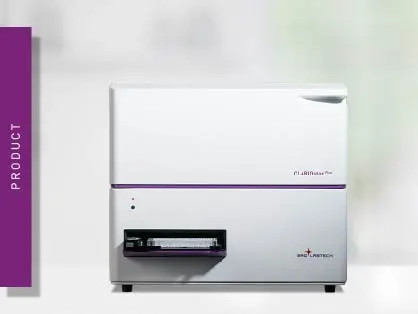
CLARIOstar Plus
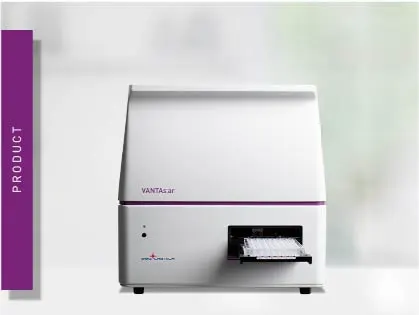
VANTAstar
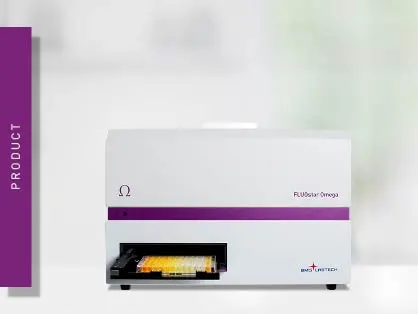
Omega Series
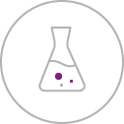 Which luminescence assays can be measured by a plate reader?
Which luminescence assays can be measured by a plate reader?
Both a single- or multi-mode microplate reader (incl. for instance absorbance and fluorescence TRF and AlphaScreen detection) can cover a wide range of assays including all Promega bioluminescence assays, enzymatic reactions, gene expression by Dual Luciferase Reporter gene (DLR), luminescent calcium flux and chemiluminescent ELISAs.
Luminescence microplate readers are also useful for analysing cell-based assays such as cell viability (ATP-based), cytotoxicity and apoptosis assays, signalling pathways and metabolism. Mycoplasma contamination in cells can also be measured.
Even proximity or protein-protein interaction assays can be measured by BRET and nanoBRET assays.
BRET is a dual reporter detection assay based upon resonance energy transfer between a bioluminescent donor and a fluorescent acceptor. As the donor emits photons by bioluminescence, excitation is dispensable.
Examples for luminescent measurements:
The following are examples of luminescence measurements made on BMG LABTECH plate readers:
- AN372: Real-Time Cell Motility Tracking Increases the Throughput of Scratch Wound Assays
- AN316: CRISPR/Cas9 genome-edited cells express nanoBRET-donor that monitors protein interaction and trafficking
- AN 271: Dual Luciferase Reporter (DLR) assay certificationAN 266: Promega's multiplexed cell viability and apoptosis assays
See a complete list of luminescence application notes.
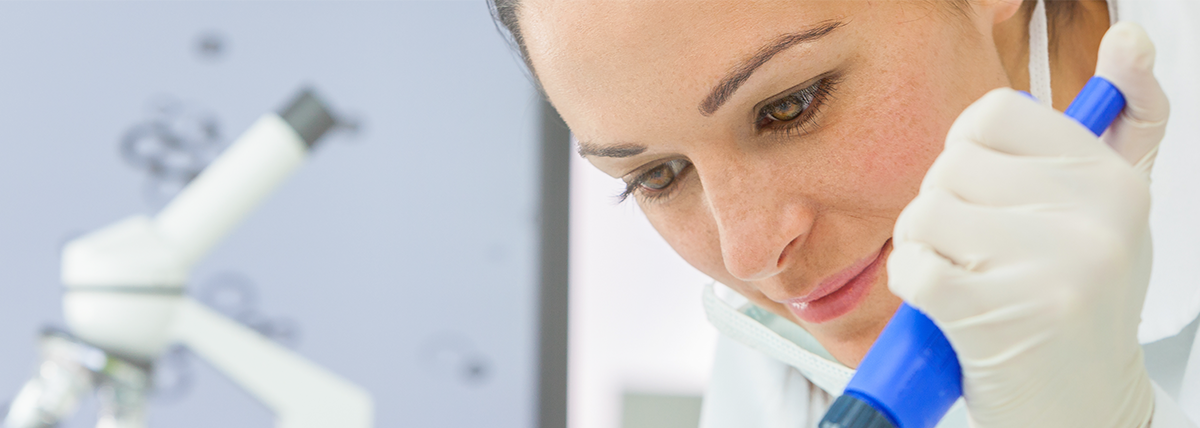
Why to choose a BMG LABTECH microplate reader?
BMG LABTECH is specialized in producing microplate readers only and brings 30 years of full expertise in microplate reading technology. This knowledge gets visible in the results that our instruments deliver - the only factor that counts in your lab! BMG LABTECH users can trust to receive best results in sensitivity, speed and flexibility. Moreover, our plate readers are developed to provide optimum performance for years. Our instruments are developed, produced and tested in Germany and are built to be extremely robust and reliable.
Buy only what you need
Due to their modularity, all our plate readers can be equipped with different detection modes and cover a multitude of applications. Additional features can be upgraded at any time. This gives you the chance to keep your options open even if you don’t use the full scope of your microplate reader right at the bat.
All-round service and support
At BMG LABTECH we strive to provide you with the very best customer service. If you need customer support, we are only a phone call or email away. During business hours, you immediately speak live to a person who is happy to assist. There is no automated phone system or waiting in a queue, our scientists, engineers and technicians are always there to help.
Multi-user integrated software package
All our instruments come with a multi-user software package that can be installed on as many computers as users requires, without the need to purchase licenses. Software updates for our microplate readers are of no charge within the first 12 month after purchase.



